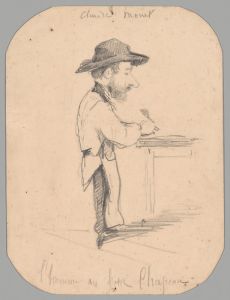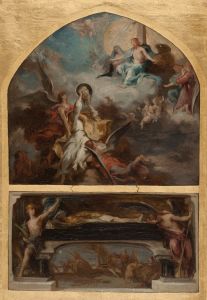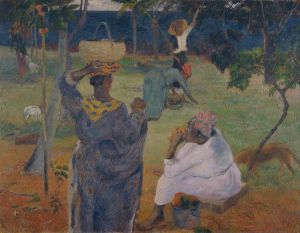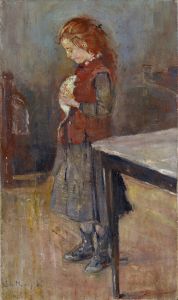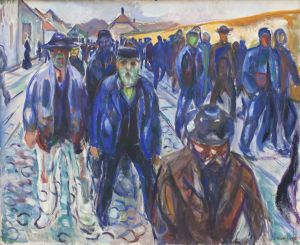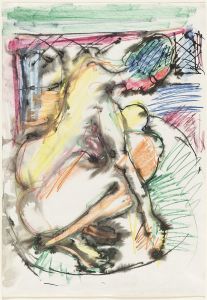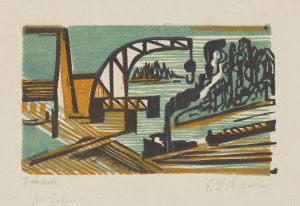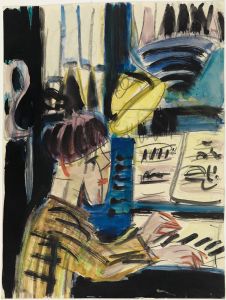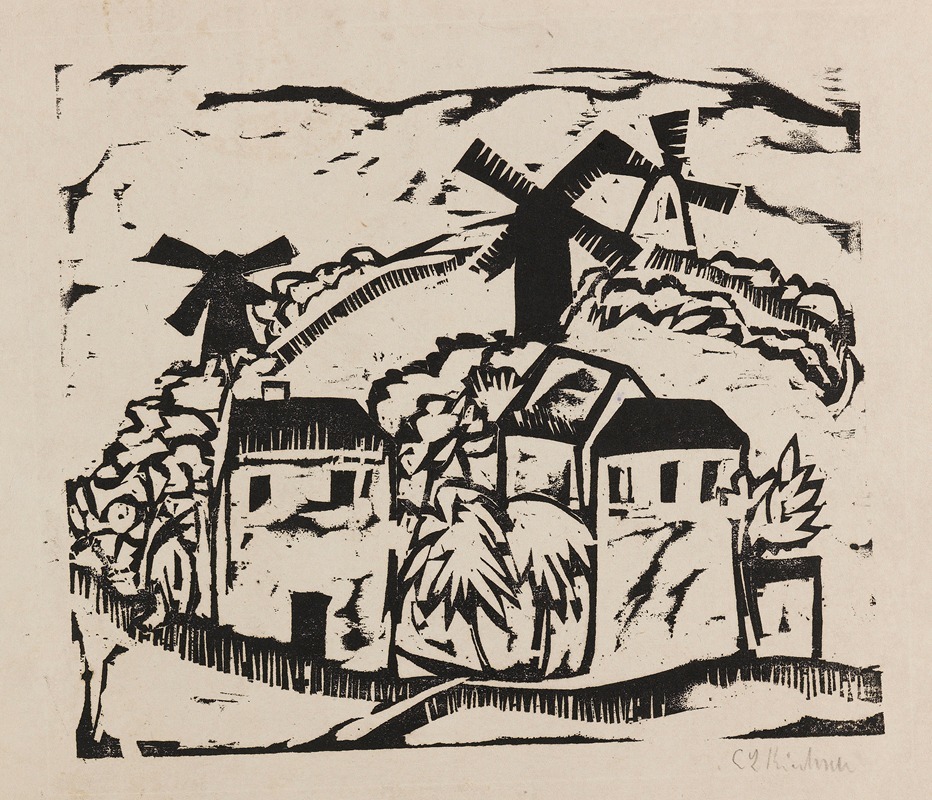
Landschaft mit Windmühlen
A hand-painted replica of Ernst Ludwig Kirchner’s masterpiece Landschaft mit Windmühlen, meticulously crafted by professional artists to capture the true essence of the original. Each piece is created with museum-quality canvas and rare mineral pigments, carefully painted by experienced artists with delicate brushstrokes and rich, layered colors to perfectly recreate the texture of the original artwork. Unlike machine-printed reproductions, this hand-painted version brings the painting to life, infused with the artist’s emotions and skill in every stroke. Whether for personal collection or home decoration, it instantly elevates the artistic atmosphere of any space.
Ernst Ludwig Kirchner, a prominent German expressionist painter and one of the founding members of the artist group Die Brücke, created the painting "Landschaft mit Windmühlen" (Landscape with Windmills). Kirchner was born on May 6, 1880, in Aschaffenburg, Germany, and his work is known for its vibrant colors, dynamic compositions, and emotional intensity.
"Landschaft mit Windmühlen" exemplifies Kirchner's unique style, which often combined elements of traditional German art with the avant-garde movements of the early 20th century. The painting features a rural landscape dominated by windmills, a common motif in European art that symbolizes both the pastoral beauty and the industrious spirit of the countryside. Kirchner's use of bold, expressive brushstrokes and a vivid color palette captures the movement and energy of the scene, reflecting his interest in conveying the emotional experience of the landscape rather than a realistic depiction.
Kirchner's artistic journey was significantly influenced by his experiences and the cultural environment of his time. After studying architecture in Dresden, he co-founded Die Brücke in 1905 with fellow artists Fritz Bleyl, Erich Heckel, and Karl Schmidt-Rottluff. The group sought to break away from traditional academic art and embraced a more spontaneous, expressive approach. They were inspired by various sources, including African and Oceanic art, which they saw as more "primitive" and authentic compared to Western traditions.
Throughout his career, Kirchner's work evolved, reflecting his changing circumstances and the broader historical context. The early 1910s were a particularly productive period for him, during which he created many of his most celebrated works. However, the outbreak of World War I and his subsequent conscription into the military had a profound impact on his life and art. Kirchner suffered a nervous breakdown and was discharged from the army, after which he moved to Switzerland in search of recovery and solace.
In Switzerland, Kirchner continued to paint, drawing inspiration from the alpine landscapes around him. His style became more refined, yet he maintained the expressive qualities that defined his earlier work. "Landschaft mit Windmühlen" likely dates from this later period, showcasing his mature style and continued fascination with the natural world.
Kirchner's contributions to modern art were significant, and his work has been exhibited in major museums and galleries worldwide. Despite facing personal struggles and the challenges of his time, he remained a dedicated and innovative artist until his death on June 15, 1938.
"Landschaft mit Windmühlen" stands as a testament to Kirchner's ability to infuse traditional subjects with a modern, expressive sensibility. The painting not only reflects his technical skill and artistic vision but also offers a glimpse into the emotional and psychological landscape of one of the 20th century's most influential artists.





